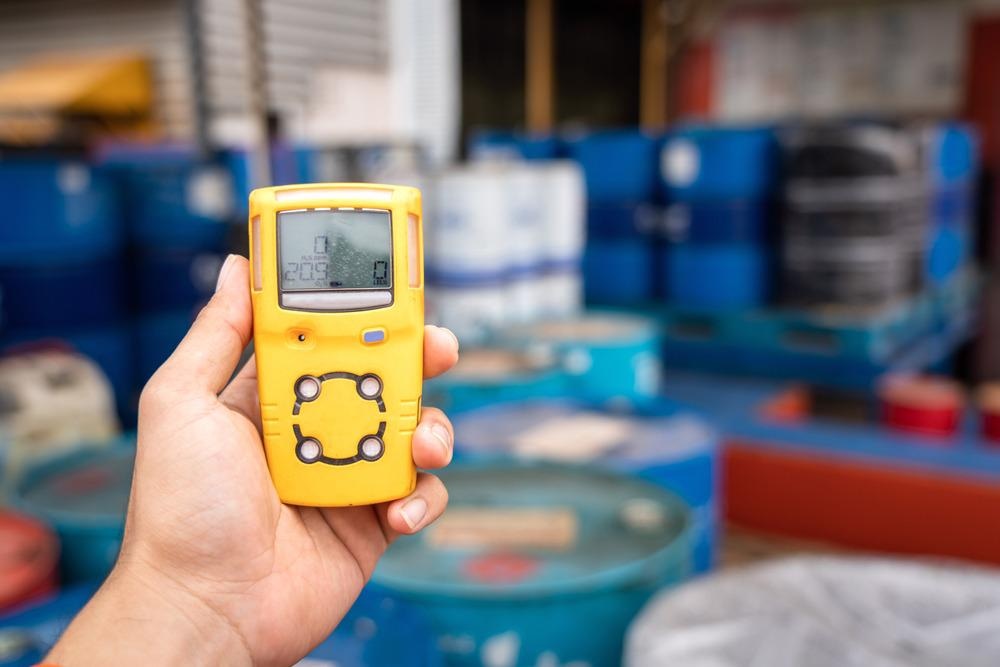Although metal oxide semiconductor (MOS) gas sensors are widely used due to their low cost, compact size, and high sensitivity to gases, they lack selectivity towards gases. This article discusses research recently published in the Journal of Alloys and Compounds which highlights the sensing properties of indium oxide (In2O3) and nickel oxide (NiO)-In2O3 composites to volatile organic compounds (VOCs).

Image Credit: Nattawit Khomsanit/Shutterstock.com
Detection of VOCs
VOCs are extensively spread in the environment, causing a threat to human health. Thus, identifying VOC types and concentration are of critical importance in gas detection. The application of MOS-based gas sensors is a common practice due to their low cost, compact size, and high gas sensor response. However, the MOS gas sensors respond to multiple gases, impeding their selectivity. Thus, it is necessary to develop sensitive materials to improve the selectivity of the MOS-based gas sensors.
Although changing the microstructure of gas-sensitive materials, doping with noble metal particles, forming p-n heterojunctions or n-n heterojunctions, compounding with reduced graphene oxide, and preparing multilayer structures were a few attempts to prepare sensitive material, these were selective only to a particular gas. In other words, when the gases are of complex composition, the aforementioned type of sensors cannot identify the gases accurately.
Among MOSs, In2O3 is an excellent gas-sensitive material with a wide bandgap, high electric conductivity, and good doping adaptability. Moreover, surface modification of In2O3 by altering its microstructure can form an effective diffusion channel and obtain a high specific surface area, which can effectively improve the gas sensing performances of sensitive materials. A NiO-based p-type semiconductor has a similar bandgap as In2O3. NiO and In2O3 together form a p-n heterojunction that facilitates the shift in the energy band of In2O3, thus further improving the sensitivity to gases.
In2O3 and NiO-In2O3 gas sensors in VOCs Detection
In the present work, the researchers prepared In2O3 and NiO-In2O3 gas sensors and measured their gas sensing performances. They observed that the response and response time of the NiO-In2O3 gas sensors were excellent and thus were chosen for dynamic measurement. A combined waveform of the rectangular and triangular wave was customized as the heating waveform.
Employing a support vector machine (SVM) as a classifier identified the gas types with 100% accuracy. Principal component analysis (PCA) allowed the team to process the datasets, and quantitative analysis of VOCs using a polynomial fitting resulted in a relative error of 5%. The obtained results indicated that the rectangular-triangular wave temperature modulation and stepwise identification scheme effectively improved the underdeveloped selectivity of gas sensors.
Comparing the gas sensing performances of In2O3 and NiO-In2O3 gas sensors revealed that they have similar optimal operating temperatures. However, In2O3 had a significantly longer response time but shorter recovery time than NiO-In2O3. The team confirmed that the NiO-In2O3 gas sensor enjoys stable performance and superior repeatability and can modulate the periodic temperature.
Recent Trends
In an article recently published in the journal Sensors and Actuators: B. Chemical, the researchers preprepared the n-tin (IV) oxide (n-SnO2)/p- Cobalt (II, III) oxide (p-Co3O4) composite nanoparticles as sensing materials. Controlling the p-n nano-junction and holes (h+)-electrons (e−) concentration, facilitated the construction of n-SnO2/p-Co3O4 nanoparticle-based sensor material with the Sn/Co molar ratio of 1:0.15 to detect hydrogen (H2) successfully and selectively without the cross-sensitivity of carbon monoxide (CO).
In another article published in the journal Colloids and Surfaces A: Physicochemical and Engineering Aspects, the researchers developed the molecular organic framework (MOF) derived porous gold coated-chromium oxide- (Au@Cr2O3)-In2O3 nanorods composite material for isoprene, ethanol, and formaldehyde gas sensing applications.
The team observed that the special porous nanorods structure is conducive to a high specific surface area and the modification by Cr2O3 and Au improves the oxygen components. Further, the results obtained from gas testing revealed that the prepared Au@Cr2O3-In2O3 sensor exhibits the reliable detection ability of typical VOCs biomarkers at a parts per billion (ppb)-level concentration, while the working temperature is as low as 180 degrees Celsius. The responses of Au@Cr2O3-In2O3 sensor were as low as 50 ppb for isoprene, 200 ppb for ethanol, and 200 ppb for formaldehyde in the study concentrations.
Conclusion
MOS usually needs moderate temperature for its operation, which is not conducive to detecting gases in real-time. Although microstructure modulation could reduce the operation temperature, the conductivity of room-temperature-based sensors cannot recover to its initial state after turning off the detecting gas, exhibiting a slow recovery rate.
Moreover, the sensitivity of room-temperature sensors is affected by humidity. Therefore, developing an efficient humidity-independent room-temperature sensing material is vital. Moreover, p-type oxide semiconductors exhibit distinctive catalytic activity, surface reactivity, and electrical properties.
More from AZoM: Considering the Behavior of Doped SrTiO3 Ceramics
References and Further Reading
Yin, X. T., Li, J., Dastan, D., Zhou, W. D., Garmestani, H., and Alamgir, F. M. (2020). Ultra-high selectivity of H2 over CO with a p-n nano-junction based gas sensors and its mechanism. Sensors and Actuators B: Chemical, 319.
https://www.sciencedirect.com/science/article/abs/pii/S0925400520306754
Wu, X., Wang, H., Wang, J., Wang, D., Shi, L., Tian, X., and Sun, J. (2022). VOCs gas sensor based on MOFs derived porous Au@ Cr2O3-In2O3 nanorods for breath analysis. Colloids and Surfaces A: Physicochemical and Engineering Aspects, 632.
https://www.sciencedirect.com/science/article/abs/pii/S0927775721016216
Wu, Z., Zhang, H., Ji, H., Yuan, Z., and Meng, F. (2022). Novel combined waveform temperature modulation method of NiO-In2O3 based gas sensor for measuring and identifying VOC gases. Journal of Alloys and Compounds, 165510.
https://www.sciencedirect.com/science/article/abs/pii/S0925838822019016
Disclaimer: The views expressed here are those of the author expressed in their private capacity and do not necessarily represent the views of AZoM.com Limited T/A AZoNetwork the owner and operator of this website. This disclaimer forms part of the Terms and conditions of use of this website.